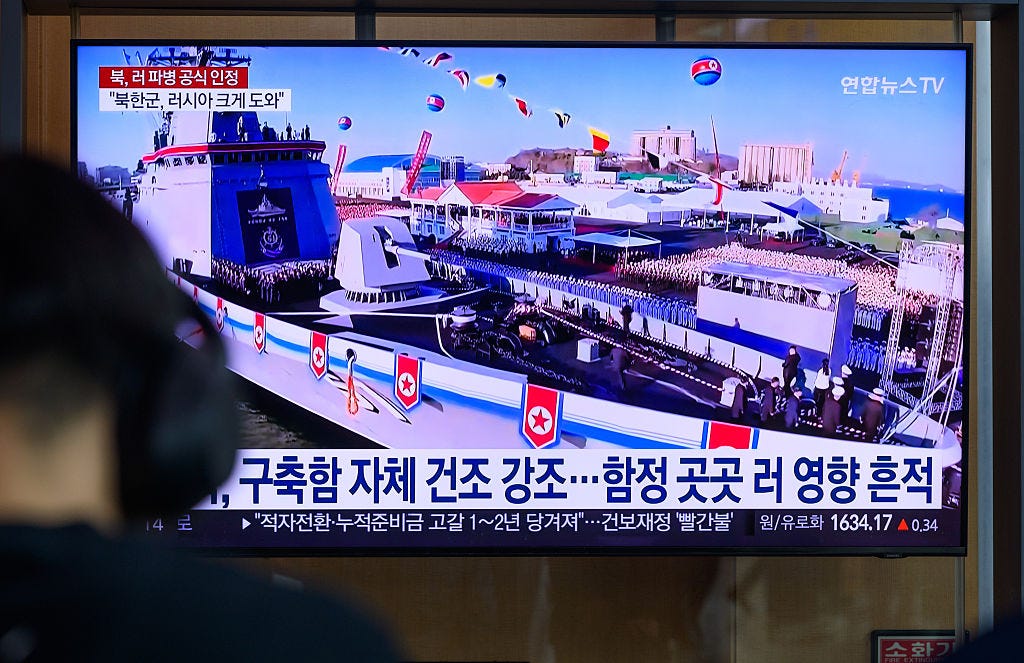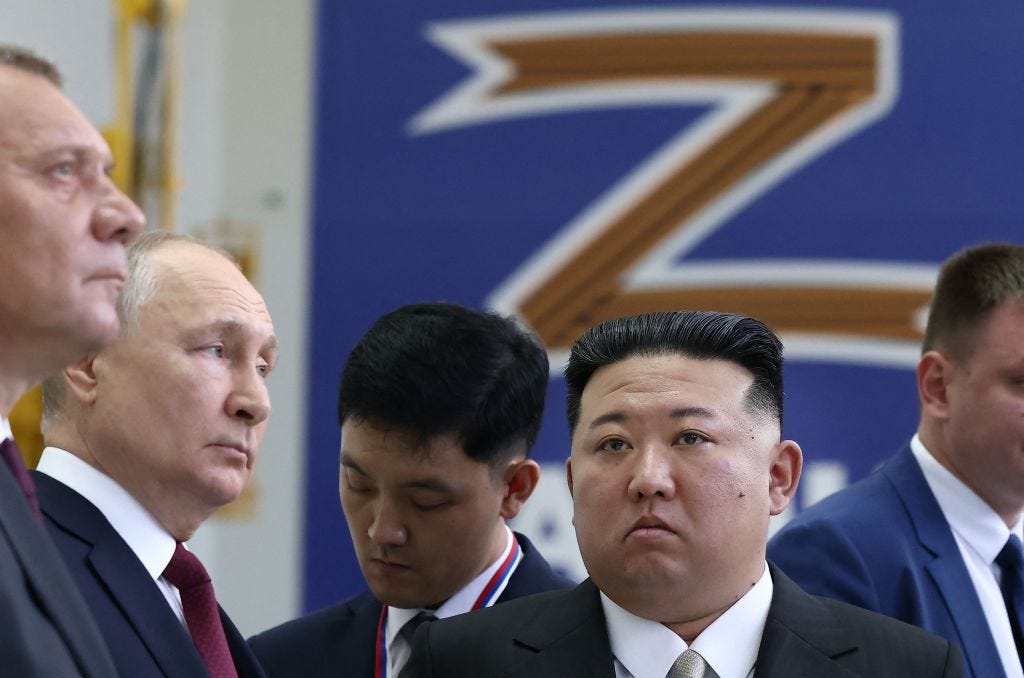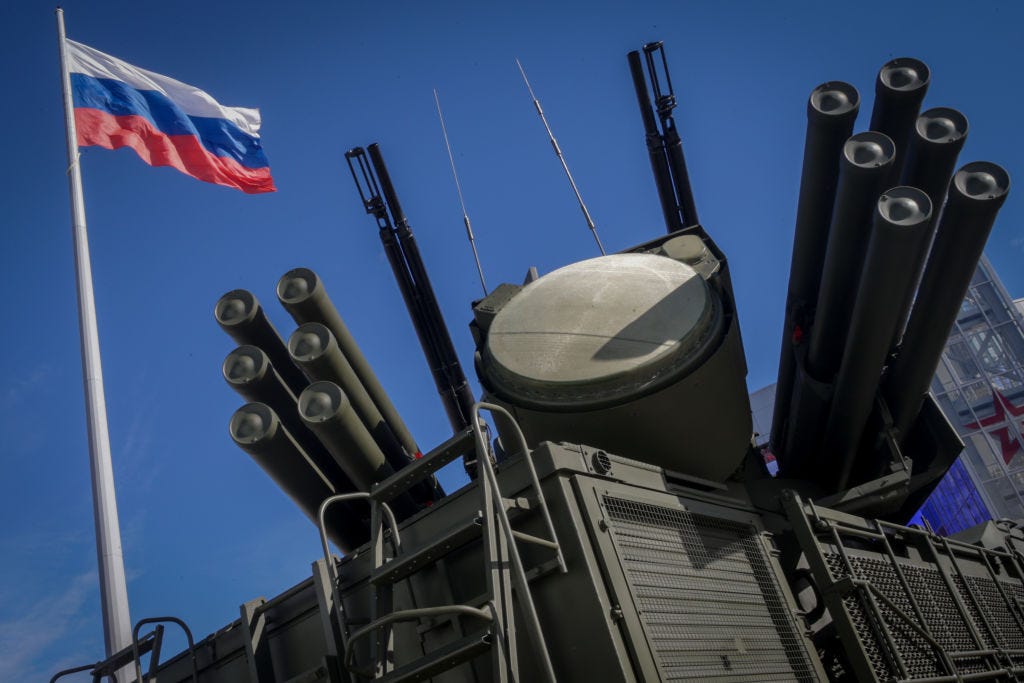
Kim Jae-Hwan/SOPA Images/LightRocket via Getty Images
In a ceremony in the North Korean port of Nampo on Friday, Kim Jong Un unveiled the Choe Hyon, a 5,000-ton frigate that appears to be outfitted with an array of powerful weapons systems, such as missile vertical launchers.
Perhaps equally worrying for those in the West, military analysts said that some of the vessel’s capabilities point to Russian involvement, or at least Russian inspiration, as the Kim regime builds modern warships.
“The timing of the ship’s construction and the question marks around the exact nature of Russian support for the DPRK suggest that it might well be more than a simple copy,” Jacob Parakilas, a research leader for Defence Strategy, Policy and Capabilities at RAND Europe, told Business Insider.
(Parakilas referred to North Korea by the acronym of its official name, the Democratic People’s Republic of Korea.)
The warship could point to further evidence of a deepening military relationship, and comes at a time when both countries said officially for the first time that North Korean troops are fighting alongside Russia against Ukraine.

Vladimir SMIRNOV / POOL / AFP
Missile systems
The Choe Hyon is bristling with weapons systems, with images indicating vertical launch systems that could be used to fire cruise or ballistic missiles, a deck gun, close-in air defense weapons, and a radar to detect threats and targets.
Images show the Choe Hyon fitted with a missile defense system that closely resembles Russia’s Pantsir S-1, which fires medium-range guided missiles at aerial threats.
Parakilas referenced the air defense system as the clearest evidence of Russian involvement.
Meanwhile, Kim Duk-ki, a retired South Korean admiral, told CNN earlier this month that Russia may have provided technology for its missile systems.
He also said that “if North Korea equips the new frigate with the hypersonic ballistic missile it claimed to have successfully tested in January, that will cause a game changing impact in the regional security.”

Leonid Faerberg/SOPA Images/LightRocket via Getty Images
A ship for total war
Evidence is emerging that Russia could be helping North Korea evade international sanctions by providing it with technology to strengthen and modernise its military.
In March, James Patton Rogers, executive director of the Cornell Brooks Tech Policy Institute, told the BBC that Russia likely helped North Korea design a new AI-enabled drone.
Parakilas said the sheer number of weapons on board the Choe Hyon points to possible Russian influence, with Russia also favoring smaller, heavily armed vessels.
“It also reflects a philosophy that the purpose of a warship is to wage total war, rather than to be capable of a range of operations up to and including war,” he said.
But Joseph Bermudez Jr., Korea chair at the Center for Strategic and International Studies in Washington, DC, cautioned that no evidence existed of “direct Russian assistance” in its construction.
He said that “North Korean naval personnel designers have seen more and more Russian vessels” and may be imitating their design.
Even so, he said that the vessel’s weapon systems have “an awful lot of capability.”
A ‘first strike’ option
According to a January report by the International Institute of Strategic Studies think tank, the frigate appears to be around 120 meters long, making it the “largest North Korea has constructed by some margin.”
North Korea has around 374 smaller patrol and coastal vessels, the IISS said, as well as two older frigates.
At the launch event, Kim said that North Korea would be ready to fully deploy the ship in about a year, while touting it as a defense against what he portrayed as US regional aggression.
Parakilas said the new warship offers North Korea increased options for a potential ballistic missile “first strike,” with the capacity to travel to regions where there may be fewer air defense systems.
However, he said that “the fact that it is a surface ship and not a submarine means that it can be tracked and attacked relatively easily.”
In its report, the IISS said that it’s only when the vessel enters service that its real capabilities will be observable.
“While activity around the new vessel at Nampo will be closely monitored,” it said, “it may be some time after launch until its intended use becomes clearer.”
Bermudez Jr. echoed this, saying that “once it goes out on patrol and we see the seaworthiness of it, that’ll make a tremendous difference.”
The post North Korea’s new warship may have been aided by Russian tech, and it’s a worrying development appeared first on Business Insider.




